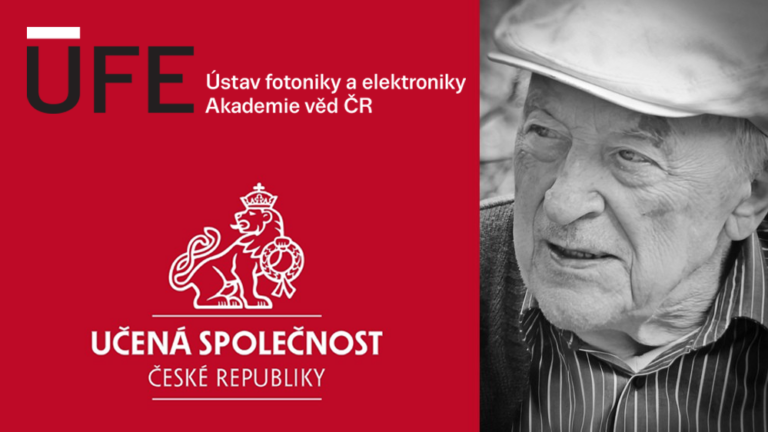Zdeněk Šroubek, MSc., DrSc., was a prominent scientific figure of our Institute as well as an esteemed member of the academic community. He passed away on Thursday, 2 October, just short of his 93rd birthday.
Šroubek’s connection with our Institute dates back to 1956, when he joined the then Institute of Radio Engineering and Electronics of the Czechoslovak Academy of Sciences (ČSAV) as a postgraduate research fellow. He devoted his life to studying a wide range of physical phenomena and played a key role in establishing what is today the Department of Nanomaterials Preparation and Characterization research team at ÚFE.
In the final years of his life, he worked as an Emeritus Research Scientist of the Czech Academy of Sciences.
Zdenek Šroubek was born on October 9, 1932 in Prague, where in 1953 he began studying at the Faculty of Electrical Engineering of the Czech Technical University. However, his interest began to lean more towards physics even then. After completing his studies in 1956, he applied for postgraduate studies at the Institute of Radio Engineering and Electronics of the Czechoslovak Academy of Sciences and continued his independent study of physical problems. The center of his interest was electron paramagnetic resonance (EPR). He created the basis of a new group of workers, with whom he built his own EPR spectrometer and began experimental research on impurity atoms in ionic crystals. At that time, a number of new experimental works were created, of which perhaps the most significant are the works on ferroelectric crystals SrTiO₃ and BaTiO₃, which aroused great interest of Prof. K. A. Müller. He worked on these systems with a perovskite structure and later made the famous discovery of high-temperature superconductivity on them. Zdenek Šroubek collaborated with Evžen Simánek on the theory of covalence of impurity atoms in ionic crystals. Their joint publications were highly appreciated by Prof. Orbach at UCLA, who gradually invited them both to stay for long periods. Zdenek Šroubek left for Los Angeles in 1967 and worked experimentally in the field of EPR at UCLA until 1969. He achieved a number of outstanding successes, managing to carry out the first double electron-nuclear paramagnetic resonance (ENDOR) with hydrostatic pressure and the first EPR on rare earth elements in metals. Later, his scientific team focused on quantum-mechanical tunneling through barriers made of thin layers of solids and gradually moved on to research on the physics of solid surfaces. More or less by a lucky chance, he managed to obtain funds to build a secondary ion mass spectrometer (SIMS) and devoted himself fully to the study of the interactions of ions with the surfaces of solids - both theoretically and experimentally. Based on the results achieved, he was invited by Prof. Oechsner to the University of Clausthal for half a year in 1980. Since 1985 he has collaborated with Prof. Falcone from the University of Calabria on theoretical problems of interactions of low-energy ions with electrons on the surface of solids. He has also collaborated for a long time with the Universität Essen and the Technische Universität Vienna.
Learned Society of the Czech Republic Tweet

